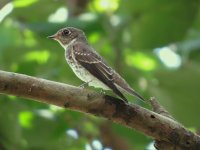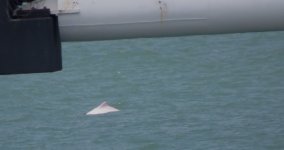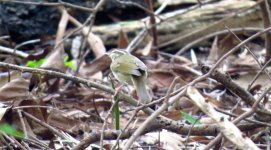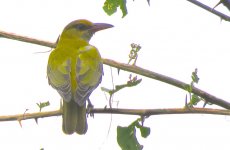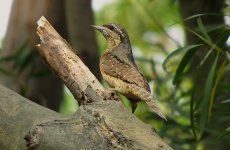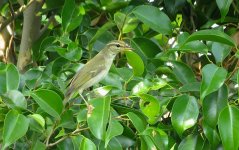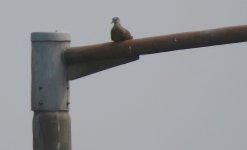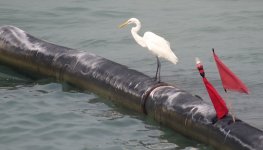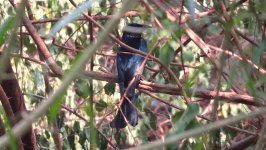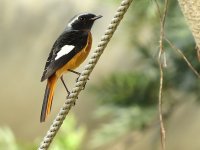Thanks for that info, so what is the split in HK between def PL and SL?
Hi Michael
The 2012 HK Bird Report says:
Since reliable criteria for separation in the field remain to be established records of these two species are combined, unless birds are trapped, allowing for known differences in the wing formula to be used for identification.
Uncommon Passage migrant, mostly in autumn, and scarce winter visitor to lightly wooded areas.; extreme dates 31 August - 5 May, highest count nine on 11 September 2005. Based on trapping records tenellipes is more common than borealoides in a ratio of 2:1, with this ratio being 3:1 in September and 1:1 in October. Only Tenellipes has winter records; the latest date for borealoides is 17 November.
Unfortunately this text does not mention that they can also be separated on song in spring. You may recall that I finally added Pale-legged to my HK list this spring on the basis of a
singing bird in April.
I was delighted to nail the Pechora Pipit Dev - it even had the good manners to show again today, albeit very briefly.
The rest of the day was also good . . .
Nothing whatsoever on the golf course, Northern Edge and Western Tangle had me wondering if the cooler weather of the last two days had cleared everything out. However the
Pechora Pipit flew up from cover in the Eastern Tangle and seconds later a male
Black-naped Oriole - just my second ever on the patch - appeared, clutching the top of an acacia in the Eastern Tangle just as an
Arctic Warbler flipped up into another tree from low on the ground. The Oriole then popped up onto a branch, dead against the light, but long enough for a few shots. . . and the magic of digital processing did the rest to produce this gross misrepresentation of what was a cracking bird.
The Core Area rocked again - with
Yellow-rumped, two Asian Brown and a Dark-sided Flycatchers all showing well as the
Pallas' Grasshopper Warbler again zipped out of the uncut grass and a
Black-winged Cuckooshrike gave a couple of brief views. A
Brown Shrike and a calling
Arctic Warbler added to the general birdiness.
Fancying my chances I nipped back for a few minutes after work and was rewarded - if rather strangely - by three
Grey Wagtails landing in the top of the tallest tree and sitting there for several minutes. The
Dark-sided Flycatcher was hunting from a branch on the ground and a Pale-legged / Sakhalin Leaf Warbler lurked deep in the undergrowth , but called a few times.
Cheers
Mike





